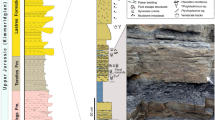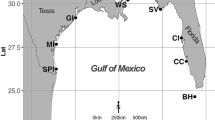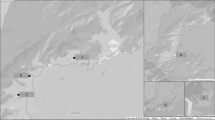Abstract
ON the muddy sand of the Whitstable flats the casts made by the large population of Arenicola marina L. do not appear to be distributed in random manner at all times of the year. During the summer months there are straight lines, a foot or two wide, along which the casts, and very probably the worms, are more numerous than they are on the adjacent parts of the shore. There is no mistaking these lines, which appear clearly in photographs of the shore. They may be a hundred yards long and are apparently arranged in all directions, being neither all parallel with, nor all at right angles to, high or low tide marks.
This is a preview of subscription content, access via your institution
Access options
Subscribe to this journal
Receive 51 print issues and online access
$199.00 per year
only $3.90 per issue
Buy this article
- Purchase on SpringerLink
- Instant access to full article PDF
Prices may be subject to local taxes which are calculated during checkout
Similar content being viewed by others
Author information
Authors and Affiliations
Rights and permissions
About this article
Cite this article
NEWELL, G., CHAPMAN, G. Distribution of Lugworms. Nature 162, 75 (1948). https://doi.org/10.1038/162075a0
Issue date:
DOI: https://doi.org/10.1038/162075a0



